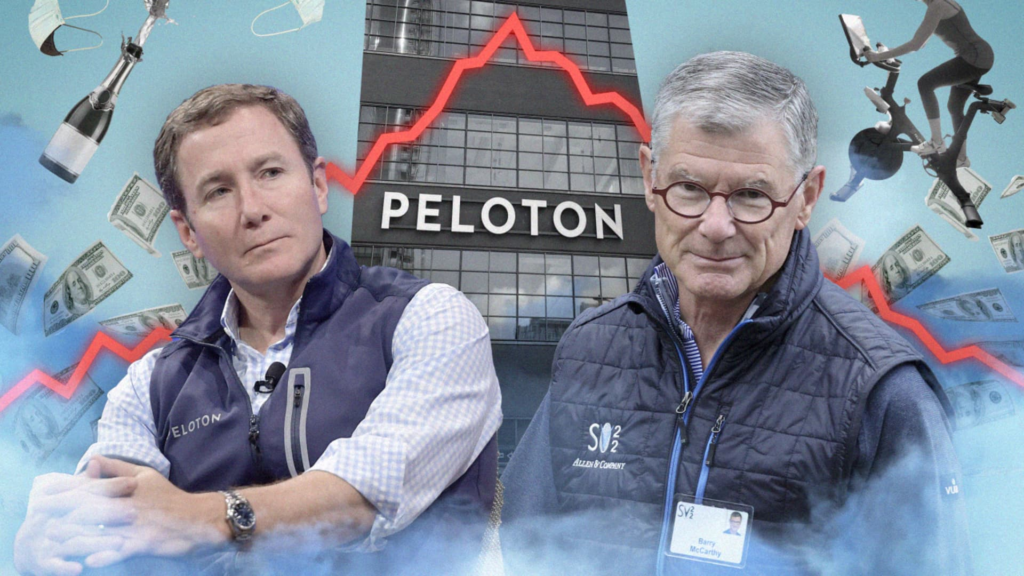On the night of Sept. 26, 2019, hours after Peloton shares went public, employees dined on seafood and sipped champagne in the glittering halls of Hudson Yards as they discussed what they’d spend their newfound paper fortunes on.
During a lavish fete in the company’s soon-to-be New York City headquarters, some talked about the new car they’d buy, the second home they’d always longed for, the student loans they’d finally be able to pay off.
“It felt like nothing could get in the way of all that,” said a former engineer who attended the party.
It was the beginning of what former employees described as Peloton’s age of “opulence” — a brief era fueled by blind optimism and hubris that took its stock to dizzying heights only for the company to suffer a stunning fall from grace a little over two years later.
Peloton’s IPO party at Hudson Yards the night they went public, Sept. 26, 2019.
Obtained by CNBC
Since reaching a peak intraday share price of $167 in December 2020, Peloton’s stock has crumbled to $13.60 a share. That’s about half of its opening share price of $27, after the IPO was priced at $29. Its market cap, which once surged to more than $45 billion, has shrunk to about $4.7 billion. Shares are up about 71% so far this year, however.
The connected fitness company carved its way into the mainstream as a solution to shuttered gyms during the early days of the Covid pandemic. But then it made the critical error of planning for that demand to last, even as the virus waned and lockdowns lifted.
The company has been gutted by plummeting sales, a shift in consumer demand and a scandal after a six-year-old died and dozens of others were injured in incidents involving the Tread+, leading to a costly recall.
The cascading problems led co-founder and CEO John Foley to step down just over a year ago. He was replaced by Barry McCarthy, a former Spotify and Netflix executive, who ushered in an aggressive turnaround plan and a new era of fiscal rigor.
Since McCarthy took…
Read the full article here





